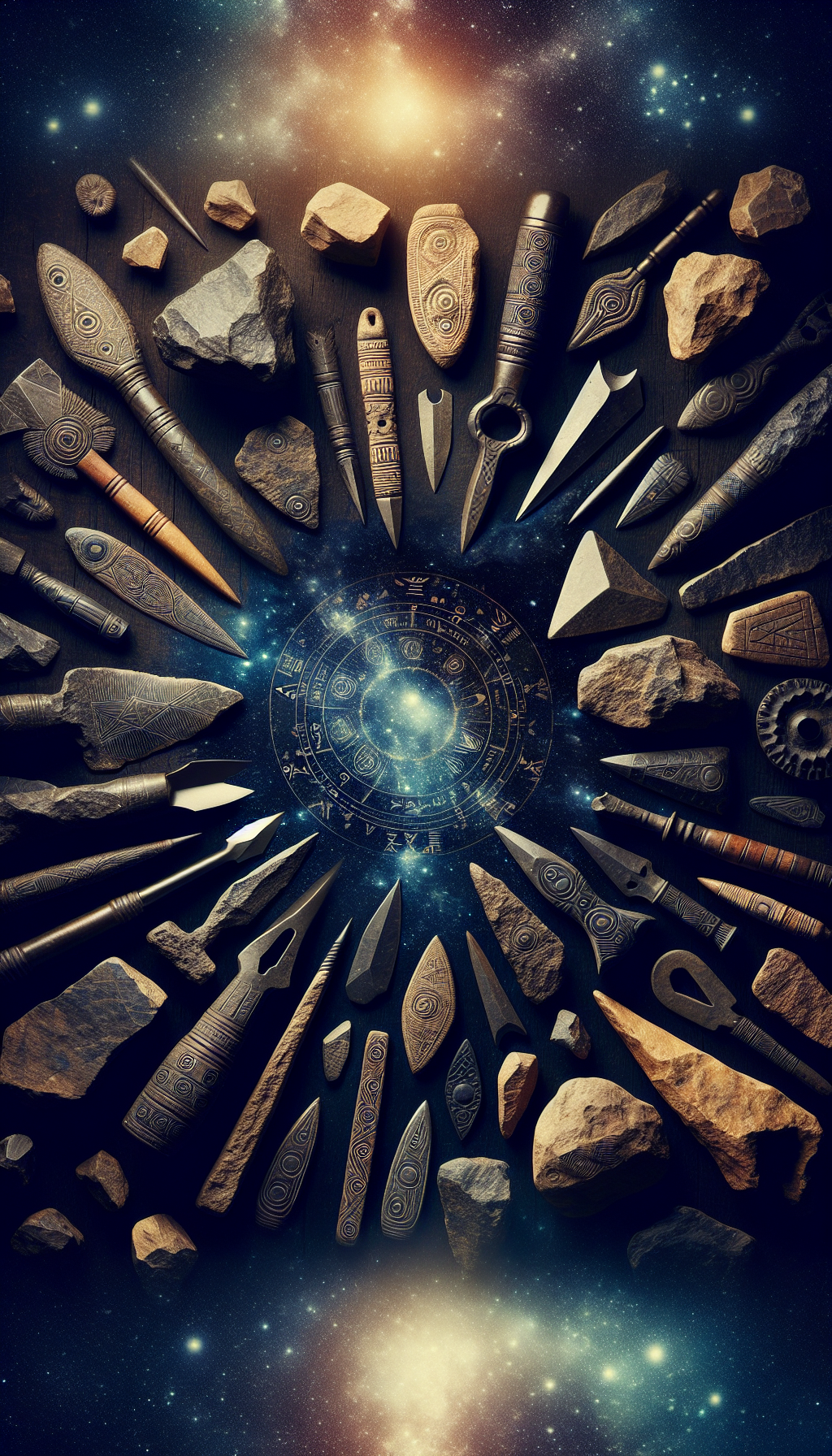Unlocking The Secrets Of History Identifying Round Stone Indian Artifacts
Round stone artifacts are among the most deceptively simple pieces in Indigenous material culture. To the untrained eye they can look like ordinary cobbles, but careful observation reveals centuries of craft, daily labor, ceremony, and play. For appraisers and serious collectors, the key is distinguishing human-made features from natural geology and placing objects in their proper cultural and legal context. This guide equips you with the criteria, vocabulary, and ethics to identify and evaluate round stone Native American artifacts responsibly.
Why Round Stone Artifacts Matter—and What They Aren’t
Round stone tools and objects were common because river cobbles and local bedrock offered workable material nearly everywhere. Their roles ranged widely:
- Daily subsistence: handstones (manos) for grinding grain, nutting stones for processing mast, hammerstones for flaking tools.
- Hunting and fishing: plummets and occasional bola stones as weights, net-related gear in some regions.
- Games and social life: discoidals used in the game often called “chunkey,” especially in Mississippian societies.
- Pigment and craft: hematite “paint stones,” anvils for pecking and shaping.
Just as important is what round stones aren’t:
- Geofacts: naturally rounded pebbles and concretions formed by water, glaciers, or chemistry.
- Random “pitted stones”: solution pits, freeze-thaw scars, and insect burrows can mimic cup marks.
- Modern replicas: machine-ground, perfectly uniform “stone discs” sold as décor or “game stones.”
Your task is to look beyond the silhouette. Intentional shaping, patterns of wear, and cultural context separate an artifact from a stone.
The Main Types You’ll Encounter
Hammerstones
- Function: Percussors used to strike cores or retouch tools; also for pecking and breaking bones or nuts.
- Diagnostics: Localized crushing and bruising along edges; step fractures; pecking scars; flattened or faceted zones from repeated strikes. Damage is concentrated in functionally logical areas, not randomly distributed.
- Materials: Quartzite, granite, basalt—tough stones that resist shattering.
- Red flags: Uniform roundness with no focused battered zones suggests a river cobble, not a tool.
Manos (Handstones)
- Function: Hand-held stones used with a metate to grind seeds, maize, or minerals.
- Diagnostics: Broad, flat to gently convex grinding faces with directional striations; glossy “grease” polish; ergonomic shape that fits the palm; often two opposed smoothed faces (bidirectional use).
- Materials: Sandstone, basalt, quartzite; whatever was matched to the metate’s texture.
- Regional/chronological notes: Widespread, with especially dense use in the Southwest from Archaic through Historic periods.
- Red flags: Tumbled river stones lack consistent directional striae and will not show large, flattened work surfaces.
Discoidals (Game Stones)
- Function: Mississippian-era game stones for “chunkey,” also status symbols in some contexts.
- Diagnostics: Deliberately shaped, lens-like discs with symmetrical edges; careful grinding, often fine polish; balanced mass; diameters commonly 3–10 cm with thickness that tapers toward refined edges.
- Materials: Limestone, sandstone, quartzite, occasionally igneous stones; the finish is more refined than eluvial cobbles.
- Cultural context: Strong in the Southeastern and Midwestern U.S., mostly AD 1000–1600.
- Red flags: Modern lathe-ground stones have machine-regular edges, dead uniform thickness, and lack hand-grinding chatter or uneven micro-polish.
Plummets and Bola Stones
- Function: Plummets—tear-drop weights possibly for lines, nets, or ritual; bola stones—weights tied to cords for entangling game or birds (rarer in many regions).
- Diagnostics: Symmetry; intentional grooving near the “head” (plummets) with smoothing inside the groove; occasional perforation. Bola stones may show encircling grooves and balance in sets.
- Materials: Hematite, slate, basalt; hematite examples can be finely polished and surprisingly heavy.
- Chronology: Plummets are often Late Archaic to Woodland in many areas; bola stones are more regional and less common than often claimed.
- Red flags: Random natural grooves from differential weathering or soft bedding planes; groove interiors that are rough and sharp (indicates natural fracture rather than cord wear).
Nutting Stones (Cupstones)
- Function: Anvils with small cupules for cracking nuts, processing seeds, or holding pigments.
- Diagnostics: One or several deliberate, shallow, palm-sized cupules; interior surfaces smoothed and sometimes striated; cups often standardized in size on the same cobble.
- Materials: Medium to fine sandstone or other workable sedimentary stones; but any stable cobble could serve.
- Red flags: Solution pits or geochemical voids often have irregular, undercut interiors and lack smoothed wear. If cups are random in size/placement and show no polish, be cautious.
Material, Manufacture, and Wear: Telling Human Work from Nature
Understanding how people shaped and used stone is central to identification.
Raw materials:
- Igneous (basalt, diorite, granite): tough, good for impact tools; polish appears subtle and granular.
- Metamorphic (quartzite, schist): quartzite excels for durability; individual grains crush and round under use.
- Sedimentary (sandstone, limestone): grind easily; produce clear striations on manos and discoidals.
- Iron oxides (hematite): heavy, takes a very smooth polish; common in plummets and “paint stones.”
Manufacture:
- Pecking: Repeated light impacts to rough out shape; leaves a stippled, dimpled surface. On authentic pieces, pecking is purposeful and often followed by grinding on edges or faces that were functionally important.
- Grinding/Abrasion: Smooths and refines form. Hand-ground surfaces show directional micro-scratches, slight waviness, and variation consistent with manual technique, not machine perfection.
- Drilling: If present, ancient drilling typically produces biconical holes—wider at both openings, narrowing toward the center—reflecting drilling from both sides.
Use-wear:
- Polish: Appears on contact surfaces; varies by task. Greasy luster and aligned striae are common on manos; edge battering and granular crushing on hammerstones.
- Edge rounding: On discoidals and plummets, edges show consistent rounding without fresh, glassy chips.
- Groove wear: In grooved weights, the groove interior should be rounded and smoothed from cord abrasion, not sharp-angled as in a fresh fracture.
- Micro-flake scars: Under 10x magnification, look for systematic micro-chipping consistent with use direction.
Differentiating geofacts:
- Natural rounding by water produces overall smoothing without concentrated wear; there will be no ergonomic or functional “zones.”
- Concretions can be spherical but lack any pecking or grinding; surfaces may show bedding patterns, not striae or polish.
- Glacial ventifacts have wind polish and sharp facets unrelated to tool functions.
Modern reproductions:
- Machine symmetry and monotony: Perfect circles, mirrored thickness, and absence of grinding chatter suggest power tools.
- Artificial patinas: Evenly colored surfaces without differential wear; chemical patinas may smell of solvents or show under UV. Modern adhesives fluoresce; check for fills on damaged zones.
Appraisal, Provenance, and Ethics
Value follows evidence. For round stone artifacts, appraisers weigh:
Provenance:
- Legal acquisition is paramount. In the U.S., it is illegal to remove artifacts from federal or tribal lands (ARPA), and burial goods are strictly protected (NAGPRA). Private-land finds require owner permission and compliance with state laws.
- Documented histories—field notes, earlier collection labels, bills of sale, or prior publications—elevate value and confidence.
- Site context: Artifacts associated with known sites, cultures, or stratigraphy are more compelling than decontextualized stones.
Cultural affiliation and chronology:
- Mississippian discoidals with strong regional traits differ in market and museum significance from generic ground cobbles.
- Late Archaic hematite plummets with classic shaping and old provenance can command interest; ambiguous grooved stones rarely do.
Craftsmanship and rarity:
- Crisp, symmetric discoidals with fine finish or unusual materials are scarce.
- Manos are common; exceptional examples (miniature forms, engraved pieces, or those tied to notable collections) stand out.
Condition:
- Stable patina and honest wear are positives. Aggressive cleaning, oiling, or tumbling diminishes value.
- Repairs: Look for epoxies, color differences in fills, or textural mismatches. UV light can reveal modern adhesives.
Market red flags:
- “Perfect” spheres or discs with no use-wear and no provenance.
- Bulk lots of “game stones” with identical size and finish.
- Overly broad claims—e.g., attributing any grooved cobble to bolas without regional or contextual support.
Ethical stewardship:
- Avoid collecting from active archaeological sites or burial contexts. When in doubt, abstain.
- Engage respectfully with Tribal nations and follow local regulations.
- Consider donating scientifically valuable items with clear provenance to public collections.
Practical Checklist for Identification and Documentation
Use this concise workflow when assessing a suspected round stone artifact:
- Record before cleaning
- Photograph all sides with scale and raking light.
- Note location, circumstances of acquisition, and any labels or stories attached.
- Material and form
- Identify stone type (e.g., basalt, quartzite, sandstone, hematite).
- Measure diameter, thickness, and weight; note symmetry and balance in hand.
- Manufacturing traces
- Look for pecking pits, grinding facets, and biconical drilling (if present).
- Check for machine signatures: perfectly uniform edges or lathe marks.
- Use-wear patterns
- With a 10x loupe, inspect for directional striae, contact polish, edge battering, groove smoothing, and micro-flake scars.
- Confirm wear is localized where function would demand it.
- Functional fit
- Compare traits to known categories:
- Hammerstone: localized edge battering, tough material.
- Mano: broad flattened faces, directional polish/striations.
- Discoidal: symmetrical lens shape, fine grinding/polish, balanced mass.
- Plummet/bola: intentional groove or perforation with smoothed interior, symmetric shape.
- Nutting stone: deliberate cupules with smoothed interiors.
- Rule out geofacts
- Ask if natural processes could explain each feature. Inconsistency or lack of localized wear argues for natural origin.
- Condition and alterations
- Check for modern grinding, oiling, or epoxy fills; use UV light if available.
- Legal and ethical due diligence
- Verify lawful provenance; avoid items from protected lands or burials.
- Keep documentation: photos, measurements, acquisition records.
- Appraisal readiness
- Prepare a short report with identification, diagnostics observed, material, size/weight, condition, and provenance summary.
- Seek opinions from qualified appraisers or archaeologists for high-value or ambiguous pieces.
FAQ
Q: How can I tell a discoidal from a nicely rounded skipping stone? A: A true discoidal shows deliberate symmetry, fine grinding, and balanced mass with continuous, evenly beveled edges. Under magnification, you’ll see directional abrasion from hand finishing. Skipping stones are thin, irregularly shaped, and lack uniform edge bevels or polish.
Q: Are perfectly spherical stones always man-made? A: No. Concretions and river-rounded nodules can be surprisingly spherical. Look for human work: pecking, grinding, and use-wear localized in functional areas. Perfect uniformity without tool marks suggests geology or modern machining, not Indigenous manufacture.
Q: Can I legally buy or sell these artifacts? A: Laws vary by jurisdiction, but in the U.S. artifacts taken from federal or tribal lands are protected and cannot be traded. Burial-related items are strictly prohibited. Pieces lawfully obtained from private land with permission and with clear provenance are generally permissible, but always seek legal guidance and exercise ethical caution.
Q: What cleaning is safe? A: Minimal, dry methods only—soft brush, wooden pick for soil, and distilled water if necessary. Avoid oils, waxes, and acids, which can erase use-wear evidence and harm value. Never “polish” a surface; patina and microscopic traces are part of the artifact’s history.
Q: Can stone be radiocarbon dated? A: Stone itself cannot be radiocarbon dated. Chronology depends on context, style comparisons, material analysis, and, when possible, dating associated organic remains from the same site. That’s why provenance and documentation are so important.
By training your eye to recognize material, manufacture, and use-wear—and by honoring legal and cultural responsibilities—you can separate meaningful round stone artifacts from lookalikes, support ethical collecting, and make sound appraisal decisions.




